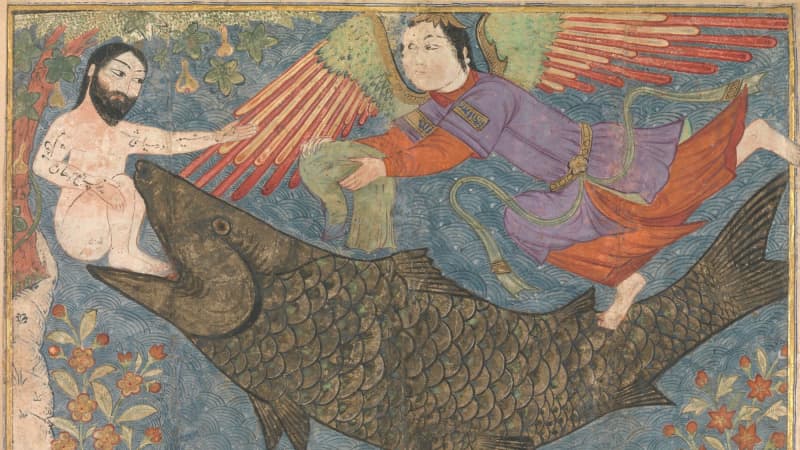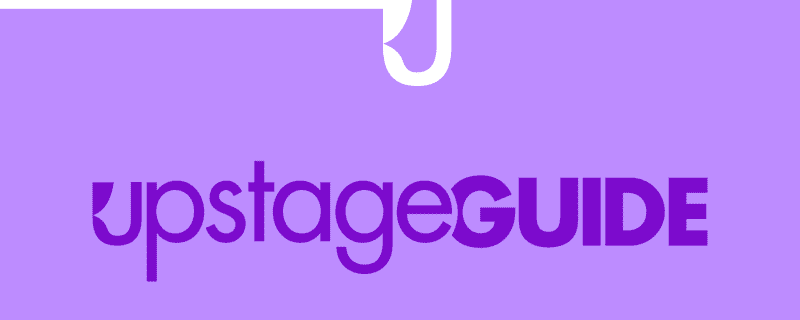Jump to:
Stories matter. Stories can teach us, entertain us, transform us. Stories connect us to the wider world, to each other, and to ourselves. They can inspire, provoke, heal, and offer meaning in the midst of chaos.
Creators of stories have many tools at their disposal. We will look at three of them here: memory, metaphor, and meaning.
- Memory, such as in the use of memoir or memory play, can set the tone for a story and establish point of view.
- Metaphor is a powerful tool that compares two unrelated things.
- Meaning is what arises when the reader connects to the work on a personal level and takes something away from it. Sometimes that meaning invites the reader on a journey to discover themselves.
Memory
In Jonah, playwright Rachel Bonds opens her play with the stage direction: “The setting there could feel only half-realized, half-imagined, a little fuzzy, still taking shape or coming into view,” evoking memory and establishing that framing before even offering clues as to whose memory we are experiencing. This suggests that Jonah has characteristics of a memory play. In her interview with Upstage, Bonds states that:
[T]he form fits the content, because we’re dealing with someone who has experienced trauma. We’re dealing with her memory; we’re dealing with a mind and body that have been affected by trauma. Things are slippery.
The Education Center at The Kennedy Center offers some background on the term memory play, made famous by playwright Tennessee Williams in his masterpiece, The Glass Menagerie, calling it a powerful example of post-war playwrights beginning to “tap into the power of memory as a narrative device.” They state further:
Influenced by the forces that were shaping American society, especially the psychoanalytic concepts of Sigmund Freud and Carl Jung, these playwrights used the concept of memory to fuel non-linear plots and intense character development.
Other styles incorporating the use of memory are memoir and auto-fiction. According to the editors of the Encyclopaedia Britannica, a memoir is a “history or record composed from personal observation and experience.” It differs from autobiography in that it focuses heavily on the events happening around the writer, whereas autobiography focuses on the writer as the primary subject; neither includes fictional elements. While memoir is not necessarily a style used by Bonds in Jonah, another style is: auto-fiction, a term first used in 1977 by Serge Doubrovsky to describe his novel Fils. In auto-fiction, the truth of autobiography is melded with fiction as these writers take liberties with the truth for literary purposes. “Auto-fiction” is not a recognized genre in the literary world; in fact, its use is somewhat controversial. In Jonah, the character Ana is writing a novel using elements drawn from her lived experience, so in that sense her book may be considered auto-fiction. As Ana experiences in the play, such a point of view can raise ethical concerns when people living in the author’s real world appear in their work. Elisa Gabbert, in her advice column for writers, calls this style of writing a “highly delicate and difficult” path, and her solutions for writing about one’s friends and family include a healthy dose of “conversation and compromise” with those that may be offended, or simply accepting that one will cause harm, or perhaps publishing under a pseudonym. She also advises: “fictionalize carefully, you’ll at least have plausible deniability.”

Jonah and the giant fish in the Jami' al-tawarikh, or Compendium of Chronicles, a book of literature and history produced in the Mongol Empire at the start of the 14th century.
The title of Rachel Bonds’s play exemplifies another important tool for writers: allusion, which can create metaphor. An allusion is a literary reference to something the reader would recognize—a famous person, work of art or literature, or a place. According to the experts at Masterclass, a writer does “not have to explicitly explain these references; more often than not, writers choose to let readers fill in the blanks.” Writers.com says “Allusions appeal to common experiences: they are metaphors in their own right.” These metaphors draw in a reader’s associations with what is being referred to. Beyoncé, Jay Z, and Taylor Swift have all used allusion in their lyric writing, referencing Shakespeare, Greek and Roman myth, Leonardo da Vinci paintings, and US political scandals. Anytime someone complains about their “Achilles heel”, calls someone a “Scrooge” or an “Einstein”, or talks about “Cupid’s arrow,” they are using an allusion to deepen their meaning.
The name “Jonah” is an allusion to a Biblical story about a prophet named Jonah. The story, many thousands of years old, would likely have begun as oral tradition, and appears in different cultures all over the world. Jonah’s story is found in the Book of Jonah in the Hebrew Bible and the Old Testament of the Christian Bible. In addition, Jonah is the only one of the twelve minor Hebrew prophets to have his own chapter in the Qur’an. The story of Jonah is so revered among the Jewish people that the entire book is read every year on the holiest day of the year, Yom Kippur. Jonah’s name means “dove”, a traditional symbol of peace, and his story is as follows: Jonah was commanded by God to bring a special message to the people of a foreign land who were in disobedience. Jonah refused to obey and fled God. Jonah’s ship encountered a terrible storm, and to save the ship, his shipmates reluctantly threw him overboard to appease his angry God. Jonah was swallowed by a big fish, and he existed in the belly of that fish for three days before being spit back up on land, but not before Jonah comes to terms with his destiny, embraces his second chance, and returns to fulfil his mission. Jonah’s story is a story of facing difficulty, growing from it, starting over, and moving toward one’s purpose. It is a message about justice, but also about mercy, compassion, and personal transformation. Might Jonah be a metaphor somehow for Ana?
Meaning
What meaning can we uncover from the use of Jonah as an allusion and ultimately metaphor in Jonah? Rachel Bonds said,
The part of yourself that you access to do good writing feels really linked to the part of yourself that grapples with spirituality, with the idea of the soul.
In his seminal work, The Hero with a Thousand Faces, Joseph Campbell, who identified Jonah's womb-like transformation myth across many cultures,lays out the steps of the Hero’s Journey, a journey exemplified by Jonah, as well as by Luke Skywalker in Star Wars, T’Challa in Black Panther, Katniss in The Hunger Games, and Dorothy in The Wizard of Oz. The hero receives a call, at first refuses the call, then must descend to the depths, battle outer (and inner) demons, and emerge transformed, if not victorious. To Joseph Campbell and other great 20th century thinkers such as the psychologist Carl Jung, this journey of living into one’s purpose is akin to the spiritual path.
In Bonds’s play, Jonah is a kind of dove bringing a message of peace to a young woman whose walls are thick and high. And as is the Biblical Jonah, Ana is on a hero’s quest, to become a successful writer certainly, but maybe also to move toward awakening, healing, and connecting with those around her as she reconnects to her spirituality; she confesses that “every particle and every thought somehow connect into this breathing, beautiful, vibrating—vessel—when all the disparate parts of your body join each other in this exultant moment of of of—power—that is—divine. That is God.”
Rachel Bonds herself is acquainted well with profound depths and is herself living the hero’s journey. She writes eloquently in her essay, “The Ocean Floor”, sharing the story of her father’s very difficult death of a “very rare and progressive disease” with a rich depth, wisdom, and perspective, understanding that it is not the end of the journey. She writes:
And here we are now, on the ocean floor. Walking through the hours, pushing against a sea of information, grief, anger, fear. The pressure is immense. Enough to crush one’s bones, certainly one’s heart. But on we press, enduring, until we might swim to the surface, survey the wreckage, let the sun beat down on it all, on our faces, our acing chests. And we will breathe. And we will reach for each other. And, I hope, we will build something new.
May her story and Ana’s be our own.
References:
|
Note: Members of the New York Public Library can access JSTOR and many other research databases through the library’s Articles & Databases page. Bob, Rabbi Steven. Jonah and the Meaning of Our Lives: A Verse-by-Verse Contemporary Commentary. University of Nebraska Press, The Jewish Publication Society, 2016. “About — Rachel Bonds.” Rachel Bonds. “The Ocean Floor — Rachel Bonds.” Rachel Bonds. Campbell, Joseph. The Hero with a Thousand Faces. Third Edition, New World Library, July 2008, California. First printing, Pantheon Books, 1949. Cartwright, Michael G. and Jacob Goodson (Editor). “Gathering at the Table for Scripture Study: A Jewish-Christian-Muslim Trialogue about Jonah Texts.” The Journal of Scriptural Reasoning, Vol. 20, Number 1, University of Indianapolis, Feb. 2023. Britannica, The Editors of Encyclopaedia. "Memoir." Encyclopedia Britannica, 14 Oct. 2023. Flaumenhaft, Mera and Ruth M. Abbey (Editor). “The Story of Jonah.” The Review of Politics. Volume 76, Issue 1. University of Notre Dame, 2014. Published online by Cambridge University Press. Gabbert, Elisa. “Ethical Advice for Writing About Friends and Family.” Electric Literature, 29 Jan. 2019. Glatch, Sean. “112 Common Literary Devices: Definitions, Examples, and Exercises.” Writers.com, Jan. 2023. Karsten, Jayne and Amy Heathcott (Adaptor). “Memory Play in American Drama.” Kennedy Center Education, The Kennedy Center. 20 Nov. 2021. Laie, Benjamin T. “The Book of Jonah.” World History Encyclopedia, 9 Jan. 2018. Masterclass. “Allusion in Writing: 3 Allusion Examples in Literature Explained.” Writing, Sept. 2022. Möller, Karl. Jonah’s Story, Our Challenge: Reading a Biblical Narrative in Today’s Church and World. SCM Press, London, 2023. Rohr, Richard. “Suffering: The Sign of Jonah.” Daily Meditations, Center for Action and Contemplation, 19 Aug. 2022. Adapted from Richard Rohr, Everything Belongs: The Gift of Contemplative Prayer, rev. ed. (New York: Crossroad Publishing, 1999, 2003), 44–46. Tiemeyer, Lena-Sofia. “Jonah in 20th Century Literature.” Religions, Vol. 13, No. 7, MDPI, July 2022, Switzerland. Warner, Brooke. “Autofiction: What It Is and What It Isn’t.” Publishers Weekly, Vol. 268, No. 2, 8 Jan. 2021. |



